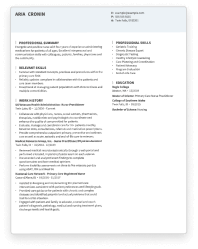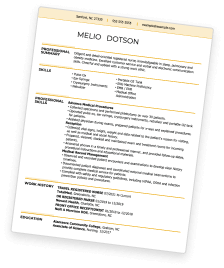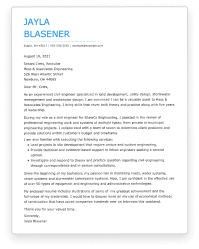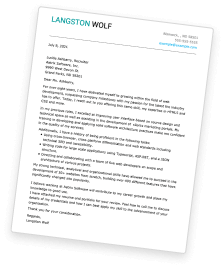Cinematographer Resumes: Overview
As a cinematographer, you are the visionary who translates a director’s vision into compelling visual narratives. Your role is critical in setting the tone, style, and overall visual direction of a film or video production.
Through mastery of camera movement, lighting, and composition, you craft scenes that engage audiences and evoke emotions, playing a pivotal role in storytelling.
Your expertise may be applied in a variety of settings, including:
- Feature Films
- Television Productions
- Commercials
- Music Videos
- Independent and Short Films
- Documentary Projects
Creating an outstanding resume is crucial for showcasing your cinematographic talents and securing new projects or positions within the film industry.
With our curated resume examples and customizable templates, we aim to highlight your unique skills in visual storytelling, technical proficiency, and creative collaboration, helping you stand out in a competitive field.
Cinematographer Resume: Choose A Format
Creating a cinematographer resume begins with selecting the appropriate format and template that best accentuates your qualifications and experience in a visually compelling manner, crucial for standing out in the film industry.
There are three primary resume formats that cinematographers can consider: chronological, functional and combination.
Chronological Resumes For Cinematographers
The chronological resume format is highly recommended for cinematographers with solid professional experience. This format lists your work history in reverse chronological order, focusing on your professional growth and achievements in the field of cinematography.
In detailing each position, include:
- Job Title and Production Company: Clearly state your role and the company or production you worked for.
- Dates of Employment: The period you were employed in each role.
- Responsibilities and Achievements: Use bullet points to describe your duties and highlight your contributions to each project. Focus on achievements that demonstrate your skill in visual storytelling, technical proficiency, and ability to collaborate with directors and production teams.
Incorporate strong action verbs and, where possible, quantify your achievements to provide context and illustrate the impact of your work. For example, mention any awards won by films you’ve contributed to or specific ways your work has elevated a project’s visual narrative.
Chronological resumes are particularly effective for showing a clear trajectory in your career, highlighting your development and key projects you’ve been involved in, making it easier for Applicant Tracking Systems (ATS), hiring managers or directors to assess your experience.
Functional Resumes For Cinematographers
Functional resumes spotlight the skills and abilities of the cinematographer, making them a suitable choice for individuals transitioning into cinematography from a different career path or for those who have a diverse set of skills not directly tied to traditional employment.
In a functional resume, focus on:
- Cinematography Skills: Detail your understanding of camera work, lighting techniques, and visual storytelling.
- Technical Proficiency: Highlight your expertise in using different types of cameras, lenses, and cinematography software.
- Creative Vision: Showcase your ability to conceptualize and execute the visual style of a film or project.
While functional resumes can effectively present your strengths and capabilities, it’s important to remember that they may not align with the preferences of all hiring managers or easily pass through ATS systems due to their non-traditional format.
Combination Resumes For Cinematographers
The combination resume format is an excellent choice for cinematographers who wish to highlight their skills and relevant work experience equally.
This format allows you first to introduce your comprehensive skill set, followed by a chronological list of your professional experiences.
By integrating both functional and chronological elements, combination resumes offer a flexible approach to presenting your qualifications, making them particularly appealing for cinematographers with diverse experiences and unique career paths.
Choosing a Format
Selecting the appropriate resume format is a pivotal step in crafting your cinematographer resume. It’s crucial to pick a format that best showcases your visual storytelling abilities and technical expertise in the field.
The chronological format is generally recommended for those with substantial experience in cinematography, as it allows you to display a clear timeline of your career progression and highlight significant projects and achievements.
This format is particularly effective if you’ve worked on notable films or projects that can demonstrate your capability and style as a cinematographer.
However, if your experience is more varied or includes significant freelance work, you might find value in a functional or combination resume. These formats can help you emphasize your cinematography skills and creative vision, regardless of the traditional career path.
For instance, if you have a strong portfolio of short films, music videos, or commercial work but less experience in feature filmmaking, these formats can allow you to highlight your technical skills and artistic contributions.
Ultimately, the best format for your resume is the one that allows you to present your work and experiences most effectively, showcasing your unique voice as a cinematographer and making a compelling case for your involvement in future projects.
How To Write A Cinematographer Resume
After selecting the best format for your cinematographer resume, compiling it involves including several critical sections.
These sections are foundational in showcasing your capabilities and experiences as a cinematographer, each playing a significant role in positioning you as an ideal candidate for your next project or position.
The essential sections of a cinematographer resume are:
- Contact Information
- Summary or Objective
- Work History
- Skills
- Education
Contact Information
At the very top of your resume, your contact information should be clearly listed, making it easy for potential employers or collaborators to reach out to you. This section should include:
- Full Name
- Phone Number
- Professional Email Address
- Location (city and state are sufficient)
- LinkedIn Profile/Online Portfolio (if applicable)
Here’s an example of what that might look like on a cinematographer resume:
Alex Rivera
Los Angeles, CA
alex.rivera@fake.email.com
(555) 123-4567
Portfolio: alexriveracinematography.com
Your contact information should be neatly organized at the top of the resume, formatted to be noticeable but not detracting from the content that follows.
Making sure this information is correct and professional is crucial, as it’s the first step towards establishing a connection with potential employers.
Summary or Objective
For cinematographers, the section following contact information serves as an introduction to your professional profile, offering a snapshot of your career and aspirations. Depending on your experience and goals, you can opt for either a resume summary or an objective.
Resume Summary: Ideal for experienced cinematographers, the summary should encapsulate your expertise, notable achievements, and the unique qualities you bring to visual storytelling. It’s an opportunity to highlight the breadth of your experience and your artistic vision.
Example of a cinematographer resume summary:
“Seasoned Cinematographer with over 10 years of experience in crafting compelling visual narratives for feature films, documentaries, and commercials. Renowned for innovative lighting techniques, dynamic camera work, and a keen eye for detail, contributing to multiple award-winning projects. Collaborative and visionary, with a passion for bringing stories to life through powerful cinematography.”
Resume objective: Suited for those entering the field or looking to pivot into cinematography from a related discipline, the objective focuses on your career goals and how you aim to grow and contribute within the role.
Example of a cinematographer resume objective:
“Aspiring Cinematographer with a solid foundation in film studies and hands-on experience in independent film projects. Skilled in a variety of digital and film cameras, lighting setups, and post-production software. Eager to leverage my technical skills and creative perspective in a professional setting, contributing to memorable cinematic experiences.”
Regardless of which you choose, ensure it’s tailored to echo the needs and language of the job you’re applying for. This personalized touch can help your resume resonate more effectively with prospective employers or collaborators, setting the stage for your work history and skillset.
Work History
For cinematographers, the “Work History” section is where you detail your professional journey, showcasing your contributions to various projects and your development as a visual storyteller.
Begin with your most recent role and proceed in reverse chronological order, focusing on positions and projects that best highlight your skills and achievements in cinematography.
Use dynamic action verbs to describe your roles and responsibilities, and when possible, quantify your achievements to provide tangible evidence of your impact on the projects you’ve worked on.
This could include recognition your work has received, improvements in viewer engagement due to your cinematographic techniques, or innovations you introduced to the filming process.
Here’s an example of what the work history section might look like on a cinematographer resume:
Director of Photography
Sunset Productions, Los Angeles, CA
January 2018 – Present
- Led the cinematography team for “Dreamscapes,” an independent feature film that won Best Cinematography at the Sundance Film Festival 2020.
- Developed innovative lighting techniques that enhanced the film’s visual mood, contributing to its critical acclaim and success at various international film festivals.
- Collaborated closely with directors to ensure that the visual narrative aligned with the script’s themes, resulting in a cohesive and impactful storytelling experience.
- Managed and mentored a team of assistant cinematographers and camera operators, fostering a creative and efficient working environment.
- Pioneered the use of drone cinematography in the production of “Skyline Wonders,” a documentary series, enhancing aerial shots and setting new standards for visual storytelling in the genre.
By clearly articulating your work history, emphasizing the specifics of your role, creative contributions, and the positive outcomes of your involvement, you illustrate your capabilities and value as a cinematographer.
This section helps potential employers or collaborators envision the expertise and vision you could bring to their projects.
Skills
In the skills section of your cinematographer resume, it’s essential to highlight both your technical proficiency and your soft skills, presenting a well-rounded view of your capabilities.
This section should complement your work history, underscoring the specific talents you bring to cinematography.
Here are some of the most popular hard skills and soft skills to consider when writing your cinematographer resume:
Top 5 Hard Skills for Cinematographer Resumes
- Visual Storytelling: Expertise in conveying narratives and emotions through visual composition, lighting, and camera movements.
- Camera Operation: Proficiency with a variety of digital and film cameras, lenses, and accessories to achieve the desired visual effects.
- Lighting Techniques: Advanced knowledge of lighting setups and modifications to create mood, depth, and focus within a scene.
- Color Grading: Skills in color correction and grading to enhance or alter the look of footage post-production.
- Technical Software: Familiarity with industry-standard software for editing, special effects, and color grading, such as Adobe Premiere, Final Cut Pro, and DaVinci Resolve.
Top 5 Soft Skills for Cinematographer Resumes
- Creative Vision: The ability to conceptualize and implement a unique visual style that complements the director’s vision and enhances the story.
- Collaboration: Working effectively with directors, producers, and other department heads to realize a cohesive visual narrative.
- Communication: Clear, concise communication of ideas and technical requirements to team members and non-technical staff.
- Problem-Solving: Quick thinking and adaptability to address and resolve unforeseen challenges during shooting.
- Leadership: Guiding and inspiring the camera and lighting teams to achieve the best possible outcome on set.
Here’s an example of what a skills section on a cinematographer resume can look like:
Skills
- Advanced proficiency in camera operation, including ARRI, RED, and Sony systems
- Expert in cinematic lighting techniques and equipment for studio and location shoots
- Skilled in visual storytelling and narrative development through cinematography
- Proficient in post-production software, including Adobe Premiere and DaVinci Resolve
- Strong leadership capabilities with experience managing film crew teams
- Excellent communicator with a track record of successful collaboration with directors
By detailing both hard and soft skills, your resume demonstrates not only your technical abilities but also your creative approach and teamwork skills, making you a strong candidate for cinematographer roles.
Education
The education section of your cinematographer resume should detail your formal training and any academic qualifications relevant to filmmaking and cinematography.
List your highest degree first, followed by other degrees or certifications, including the name of the institution and its location.
If applicable, you can also mention your graduation date, relevant coursework, workshops, or honors that contribute to your expertise in cinematography.
For example, the education section of your cinematographer resume may look like:
Bachelor of Fine Arts in Cinematography
New York Film Academy, New York, NY
Note: Practical experience and a strong portfolio often hold significant weight in the industry. Therefore, in addition to traditional educational achievements, consider including any specialized training or workshops that have honed your skills as a cinematographer, or create a separate section for certifications (see below).
Additional Sections
Including additional sections in your cinematographer resume can provide a more comprehensive view of your qualifications and interests. These sections can highlight aspects of your professional and personal development that are not covered elsewhere in your resume.
This can include:
- Certifications
- Film Festivals and Awards
- Professional Memberships
- Workshops and Conferences
- Relevant Hobbies
For example, additional sections on your cinematographer resume may be:
Certifications
- Certified Steadicam Operator, Tiffen Steadicam Workshop, 2018
Awards
- Best Cinematography, Independent Film Festival Boston, for “City Lights,” 2019
Professional Memberships
- American Society of Cinematographers (ASC), Member since 2020
Essential Certifications for Cinematographers
While certifications may not always be a strict requirement for cinematographers, certain credentials can underscore your technical proficiency and dedication to the craft.
These certifications can be especially valuable for those early in their careers or looking to specialize in specific areas of cinematography.
Some noteworthy certifications and credentials that can benefit cinematographers include:
- Certified Drone Pilot (FAA Part 107): As drone cinematography becomes more prevalent, having an FAA-certified drone pilot license can open up opportunities for aerial cinematography, adding a dynamic component to your skill set.
- Digital Imaging Technician (DIT) Certification: A certification in this area highlights your expertise in digital cameras, color grading, and the workflow of digital cinematography, ensuring the visual quality of footage from set to post-production.
- Steadicam Operator Certification: Specialized training and certification for Steadicam operation can be a significant asset, showcasing your ability to execute complex, smooth camera movements that enhance storytelling.
- Camera-Specific Certifications: Manufacturers like RED, ARRI, and Sony offer training and certification programs for their camera systems. These certifications demonstrate your familiarity with the latest camera technology and its optimal use on set.
- Color Grading Certification: Proficiency in color grading software such as DaVinci Resolve can be certified through specific training programs, underscoring your ability to contribute to the post-production process and enhance the film’s visual style.
9 Tips For Writing a Cinematographer Resume
Tailor Your Resume: Customize your resume for each application to reflect the specific requirements and preferences mentioned in the job or project listing. Highlight experiences and skills that are most relevant to the role you’re applying for.
Use Action Verbs: Employ dynamic verbs to describe your contributions to film projects, such as “filmed,” “directed,” “produced,” “designed,” or “managed,” to convey your active involvement and achievements.
Highlight Achievements: Where possible, quantify your successes, such as “contributed to a film that won an award at a prestigious film festival” or “increased social media engagement through promotional video content by 40%.”
Include Keywords: Scan the job posting for specific terms related to cinematography, film production, and technical skills, and incorporate these into your resume to improve ATS compatibility and demonstrate your industry knowledge.
Showcase Your Portfolio: Provide a link to your online portfolio or reel demonstrating your best work. This allows potential employers or collaborators to visually assess your skills and style.
Detail Your Technical Skills: Be specific about your proficiency with camera equipment, lighting techniques, software for editing and color grading, and other tools of the trade.
Discuss Collaborative Projects: Highlight your ability to work effectively with directors, producers, and other members of the film crew, emphasizing any leadership roles you’ve undertaken.
Continuing Education and Certifications: Mention any workshops, courses, or certifications you’ve completed that keep you up-to-date with the latest cinematography techniques and technologies.
Proofread: Ensure your resume is meticulously proofread to avoid errors. A well-polished resume reflects your professionalism and attention to detail, crucial qualities for a cinematographer.
Helping Job Seekers Like You


Use Hloom's Resume Builder
Key Takeaways
- A cinematographer’s resume should highlight your ability to tell stories through visuals, emphasizing your creative vision and technical skills in capturing and enhancing narratives on screen.
- Opt for a chronological format to detail your work history and major projects, or a combination format to equally highlight your technical skills and professional experiences, depending on what best showcases your career.
- Detail your proficiency with various cameras, lighting equipment, software, and any specialized certifications, such as drone operation or Steadicam proficiency, that set you apart as a cinematographer.
- Always include a link to your professional reel or portfolio to give potential employers direct insight into your style, technique, and the scope of your work.
- Customize your resume to align with the specific requirements and preferences of each job or project, using keywords from the posting to ensure it passes through ATS filters and catches the eye of hiring managers or directors.
Use Hloom's Cover Letter Builder














